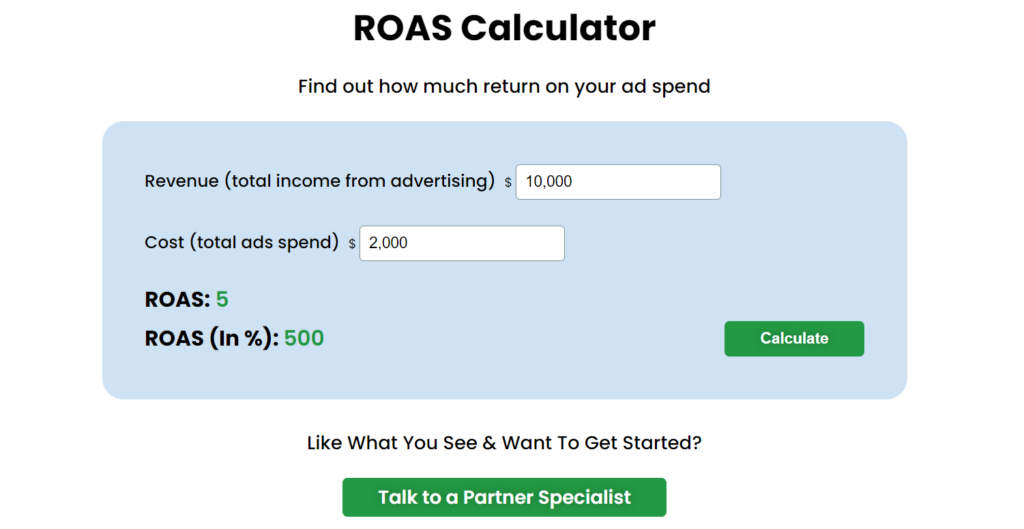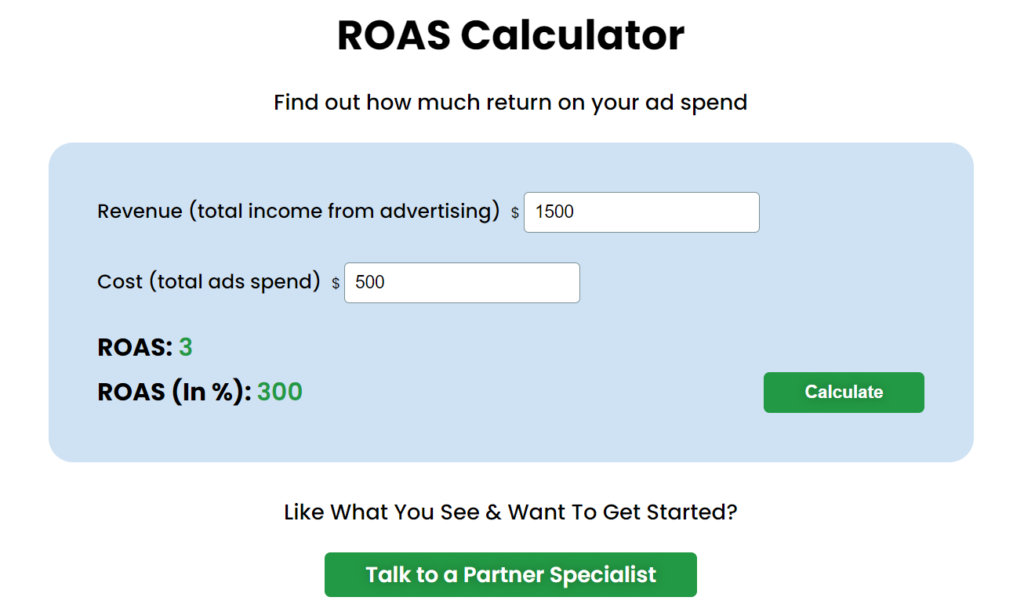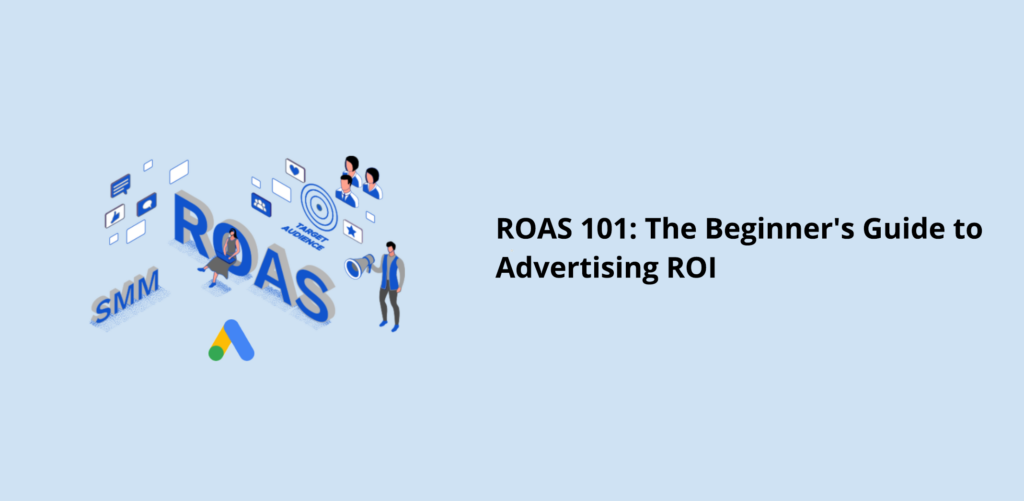In the high-stakes game of digital marketing, advertisers are akin to skilled chess players, strategically placing their pieces and always staying two steps ahead. Their best ally in this game? Data!
Unlocking success in the competitive realm of digital marketing requires strategic moves and leveraging valuable insights. One such powerful tool that you must use is the Return on Ad Spend.
ROAS helps you to analyze the advertising campaigns’ profitability and efficiency to provide comprehensive insights.
In this article, we delve deep into the significance of ROAS and how it can be leveraged to optimize advertising efforts
ROAS = (Revenue / Ad Spend) * 100
For example, if a campaign generates $10,000 in revenue and the ad spend was $2,000, the ROAS would be 5x or 500%
Using the ROAS calculator is relatively straightforward, but it requires having accurate data on your ad spend and revenue. Here’s a step-by-step guide on how to use it:
First, you need to gather the required data. This includes the total amount you spent on your advertising campaign (Ad Spend) and the total revenue generated from that campaign (Revenue). These values could be derived from your advertising platform (like Google Ads or Facebook Ads) and your sales data, respectively.
ROAS = (Revenue / Ad Spend) * 100
Perform the division first (Revenue / Ad Spend), and then multiply the result by 100. The resulting figure is your ROAS.
A ROAS greater than 100% indicates a profitable campaign, with revenue exceeding the cost of the ad spend. Conversely, a ROAS less than 100% suggests that the ad spend was not fully recouped through generated revenue, indicating that the campaign might need adjustments or optimization.
Monitor your ROAS over time to track the profitability and efficiency of your ad campaigns. It can help inform decisions about where to allocate your ad budget, which campaigns to optimize, and how to adjust your targeting and messaging to improve overall performance.
Remember, ROAS is not a standalone metric but should be used in combination with other key performance indicators (KPIs) to get a comprehensive view of your campaign’s performance.
Example of Using the ROAS Calculator:
Suppose you ran a digital advertising campaign with a total ad spend of $500. The campaign generated $1,500 in revenue. To calculate the ROAS, you would plug these values into the formula:
ROAS = ($1,500 / $500) * 100 = 300%
This ROAS of 300% indicates that for every dollar spent on the campaign, three dollars were generated in revenue, marking the campaign as highly profitable.
Monitoring ROAS over time can provide advertisers with valuable insights. It can inform data-driven decisions on allocating the ad budget, optimizing campaigns, and adjusting targeting and messaging to improve overall performance.
While ROAS is a valuable measure, it’s only a part of the larger equation. Advertisers should also consider other KPIs like CTR, CPA, and CLV for more complete campaign analysis. For instance, a campaign with a high ROAS but a high CPA may not be as profitable, while a lower ROAS with a higher CLV might offer long-term value.
Though the average ROAS varies, a 4:1 or 400% ROAS is often used as a benchmark for success. But this is just a guideline and can differ based on other factors.
In sum, ROAS, in combination with other metrics, helps advertisers refine their strategies, enhance ROI, and make data-driven decisions. With digital advertising constantly evolving, tools like the ROAS calculator have become more essential for navigating this complex field.





